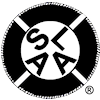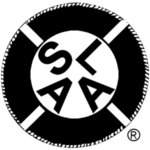Does the committee have any guidance on a local intergroup listing a meeting that is a SLAA/AA combo meeting? Would adding these meeting groups to our local meeting list be in any way a violation of our steps, traditions and concepts?
Response #1:
I wonder whether the fact that this is a cross-program meeting means that this meeting group is not fully in alignment with S.L.A.A. Tradition Three, especially with regard to its oft forgotten clause, “…provided that as a group they have no other affiliation”.
Ultimately, the decision to list or not list a meeting group at the Intergroup level is a matter for the Intergroup to decide in group conscience. Alignment with the Twelve Traditions could certainly be used as a guiding factor in that decision — regardless of whether there’s more emphasis placed on alignment with Tradition Five (carrying the message) or alignment with that latter portion of Tradition Three. When it comes to cross-program groups, these two Traditions can seem to be at odds.
As a means of avoiding the cross-program issue, a meeting group I’m involved with chose to clearly position itself as an S.L.A.A. group, but also be clear that we focus on a specific set of early life experiences that we believe contribute to our troubles with love and sexuality. Although there happens to be a separate Twelve Step fellowship that helps its members recover from such early life experiences, the group does not affiliate itself with that other fellowship. Many of the group’s individual members identify as members of both S.L.A.A. and the other fellowship, but members of the group do not need to be members of the other fellowship, as certain kinds of illegal activities common to some sex and love addicts are an explicit disqualifier for membership in that other fellowship. So, if my group were to affiliate itself with the other fellowship as well as S.L.A.A. we would thereby be excluding some sex and love addicts from membership in the group. From my perspective, exclusions that arise as a result of an individual’s failure to qualify for membership in all Twelve Step fellowships with which a cross-program group affiliates, would be an indicator that the group is not operating in alignment with the Third Tradition of S.L.A.A.
If the meeting group seeking a place on your intergroup’s meeting list intends to exclude sex and love addicts who do not meet the requirement for AA membership, that lack of alignment with Tradition Three might be enough of a reason for your intergroup to decide to decline the request. Each group is fully autonomous and does not need membership within an intergroup in order to exist.
Response #2:
While each group is autonomous, that autonomy does not extend to matters affecting other SLAA Groups or SLAA as a whole (Tradition 4). With the transition to online meetings accessible by every sex and love addict in the world, every Group now has the ability to affect other Groups and SLAA as a whole in the way it chooses to carry the message (Tradition 5).
As per Tradition 4, it is a matter for each Intergroup whether to accept any new Group. I can share from my own experience that it is more productive to gently work with new Groups (and their members) to help them align with SLAA’s Steps, Traditions and Concepts.
Should this meeting be listed as a SLAA Group? That is a decision for the Intergroup to assess on the facts. Matters I suggest to consider in reaching an informed Group Conscience are:
- Does the Group use sufficient SLAA literature to be properly characterized as a SLAA Group despite using some outside (AA) literature?
- Does the Group read out the Conference approved Notice advising that they are using non-Conference Approved Literature (Concepts 1 and 2)? So, attendees are aware they are not using SLAA materials and can ask why.
- Is the Group really a blend of two fellowships? If so, this new “hybrid fellowship” is an outside affiliation disentitling it to be a SLAA Meeting (Tradition 3). This is for the singularity of the SLAA Message in the interests of the fellowship as a whole (Tradition 4).
- Does the Group endorse AA literature as being superior to equivalent SLAA literature? This affects SLAA as a whole contrary to Tradition 4 and endorses an outside enterprise (AA) contrary to Tradition 6.
Response #3:
An SLAA meeting is an SLAA meeting if they say they are. And thus, should be listed by their Intergroup on the local meeting list. Deciding to list or not list a meeting is an act of government, not an act of service. Decisions such as this should be avoided. Let’s not take ourselves too seriously. If a meeting asks to be listed, it should be listed.
Listing an SLAA meeting is consistent with the Steps, Traditions, and Concepts.
Of course, someone will point out that a combo meeting is contrary to the guidance of Tradition Three: “provided that as a group they have no other affiliation.”
A couple of thoughts:
- The Intergroup does not govern. How can they then judge and exclude?
- If the meeting is truly operating contrary to the Traditions, the meeting will fail naturally. The Intergroup should not govern, but certainly can comment.
- The meeting in question is clearly a Twelve Step meeting and not affiliated with a religious or political organization. What are we afraid of?
- When the Traditions were first written there was only one Twelve Step fellowship. The intent of the Traditions was to avoid religious, political, or economic controversy. The intent was not to segregate those with different diseases. I suspect those of us who believe in the Twelve Steps as a framework for living can learn from each other no matter the nature of our disease or its outward symptoms.
The guidance in Tradition Three needs to be understood in historical terms. It does not prohibit a meeting from determining how to conduct itself; it does not prevent a meeting from managing its affairs autonomously.
Response #4:
Tradition Five provides guidance for this situation. An SLAA group should have one primary purpose, to carry its’ message to the sex and love addict who still suffers. By having a combination meeting with another program / addiction, the primary purpose could become confused. That, in turn, may limit the recovery of the members of that meeting.
However, Tradition Four states that each group is autonomous, unless it affects other groups or the fellowship as a whole. It seems unlikely that a combination meeting would affect any other groups or the program as a whole. So, the intergroup has the right to make the decision they believe is best.
I also have some experience with something very similar. I was a regular member of a combination AA / Alanon meeting for many years, and it was an important part of my recovery. The local intergroups of both programs would not list it on their websites or meeting schedules due to the conflict with Tradition Five. The meeting did very well (until the pandemic) and drew in new members by word of mouth. So, listing a meeting on an Intergroup website is not absolutely necessary for it to survive.
Response #5:
I do not believe that a double winner SLAA/AA meeting could violate tradition 4 (matters affecting SLAA as a whole). I also believe that tradition 3 is applicable (only requirement is a desire to stop living out a pattern of sex and love addiction – provided they that as a a group they have no other affiliation). It is impossible for SLAA to not have an affiliation to AA. It’s mentioned in our preamble, for starters. The solution, which is the 12 Steps, as they are stated are exactly the same in SLAA as in AA, except before the dash, and the last portion of step 12. Step 1, the primary area of difference is a statement of the problem up to the dash. The rest is the solution, which is why the wording is virtually unchanged.
Tradition 5 is the strongest area of support for sharing this SLAA/AA meeting. If the meeting is carrying the message to the sex and love addict who still suffers it deserves to be listed. There are plenty of meetings, that while open to all, they have a focus. This meeting is no different. We cannot presume that someone would regularly attend this meeting if they only carried the alcohol symptom. Nor is it anyone’s business provided the meeting has been declared an open meeting by group conscious.
Response #6:
I would think that double winners meetings are members from both programs; therefore, I don’t see violation of traditions. Moreover, we adopted traditions from AA anyway.
I found double winner meetings in more than one program that I am in are enriching each other.
After all, Tradition 3 states, “The only desire for membership is to stop living out a pattern of sex and love addiction. Any two or more persons gathered together for mutual aid in recovering from sex and love addiction may call themselves an SLAA group provided that as a group, they have no other affiliation”.
And Tradition 4 states, “Each group should be autonomous except in matters affecting other groups or SLAA as a whole”.
Traditions are designed to apply in real life, I believe, and recovering SLAA members, who have AA as a part of their story have the right to carry the message to sex and love addicts, who are in AA as well, according to Tradition 5.
Response #7:
In one sense I think all addictions cause the same neuro-chemical (dopamine) response in the brain, so a double winner meeting makes sense. It is just our drug of choice that differs.
Tradition 4 – Each meeting is autonomous so the meeting itself is free to make its own mistakes.
For Tradition 5 It was unclear to me if this was a meeting of Sex & Love Addicts who are also Alcoholics or a meeting of people who are either Alcoholics, Sex and Love Addicts or both.
If it is for Sex & Love Addicts who are also Alcoholics, then I would say it is okay to list it as a SLAA meeting.
If the intergroup has a list of non-SLAA meetings and it is for SLAA and/or AA they could list it there or decline to list the meeting.


